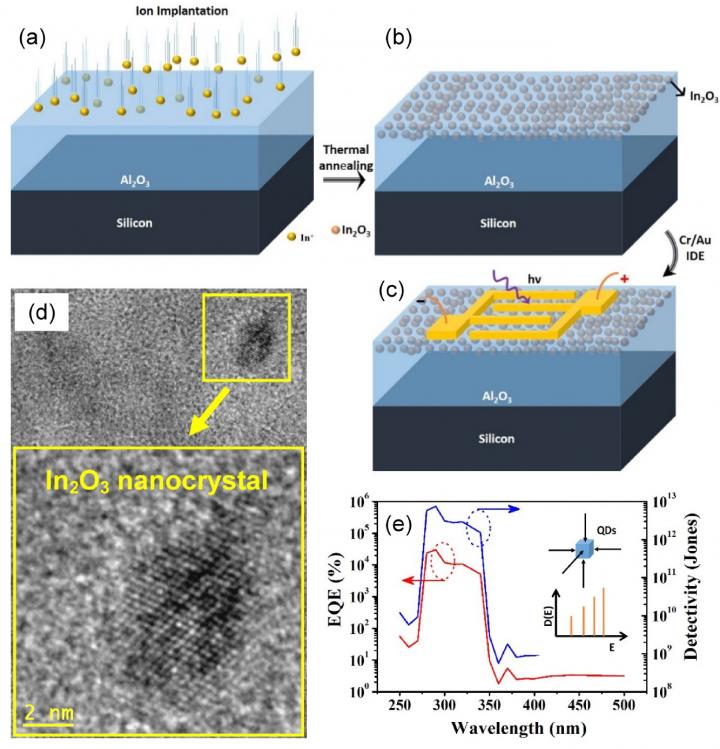Scientists make UV photodetector with indium oxide

Semiconductor quantum dots (nanocrystals just a few nanometers in size) have attracted researchers' attention due to the size dependent effects that determine their novel electrical and optical properties. By changing the size of such objects, it is possible to adjust the wavelength of the emission they absorb, thus implementing selective photodetectors, including those for UV radiation.
Narrow-band UV photodetectors find application in many areas, in particular in biomedicine where they are used for fluorescence detection or UV phototherapy. The materials commonly used in the manufacture of such photoreceivers are wide-bandgap oxides and nitrides, which offer a greater range of operating temperatures and transparency for visible and solar light in addition to a smaller size of the device.
Now, a team of researchers from Russia and India has created a narrow-band UV photodetector based on In2O3 nanocrystals embedded in a thin film of Al2O3. "In the process of our work, we managed to achieve a significant reduction in the dark current (more than two times as compared to a similar photodetector based on In2O3 nanowires). By integrating the In2O3 phase into the wide-band matrix and due to its low dark current, the new photodetector shows record values of the responsivity and external quantum efficiency," says Alexey Mikhaylov, head of the laboratory at the UNN Research Institute of Physics and Technology at Lobachevsky University.
In2O3 is a transparent wide-bandgap semiconductor oxide with a direct band gap of about 3.6 eV and an indirect band gap of ~ 2.5 eV. It is well known that highly sensitive UV photodetectors can be created based on In2O3 . According to Mikhaylov, the researchers together with their Indian colleagues from Indian Institute of Technology Jodhpur and Indian Institute of Technology Ropar managed to synthesise In2O3 nanocrystals in an Al2O3 film on silicon by implanting indium ions.
Ion implantation is a basic method in modern electronic technology, which makes it possible to control the size of inclusions thus allowing the optical properties of the photodetector to be tuned. The Al2O3 matrix used for indium oxide nanocrystals offers some advantages over other dielectrics in that this wide-bandgap material (8.9 eV) is transparent for a wide range of wavelengths.
The schematic above shows the process for fabricating a photodetector based on an Al2O3 film with ion beam synthesised In2O3 nanocrystals (a-c), electron microscopic image of an In2O3 nanocrystal (d), and the spectral dependence of the photodetector parameters.
The sensitivity band in the UV range has a width of only 60 nm and shows a high UV-visible rejection ratio (up to 8400). This photodetector is highly suitable for practical applications such as narrow-band spectrum-selective photodetectors. The device design based on ion-synthesised nanocrystals could provide a new approach for realising a visible-blind photodetector.
'Deep UV narrow-band photodetector based on ion beam synthesized indium oxide quantum dots in Al2O3 matrix' by Saravanan Rajamani et al; Nanotechnology, Volume 29, Number 30


































